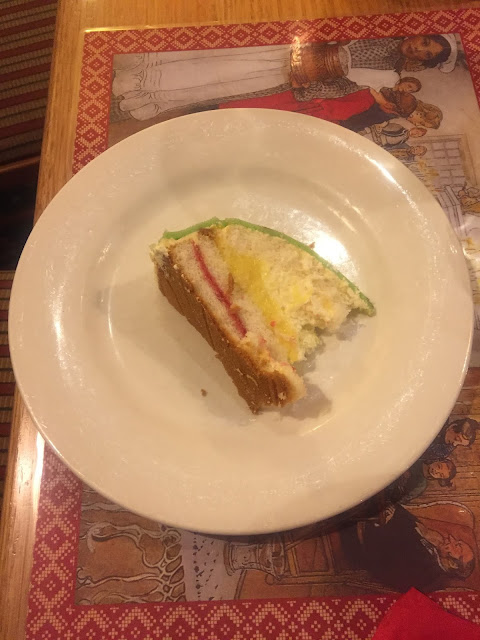There are farmers
markets and there are farmers markets. The first kind is where you meet people
with dirt under their nails. If you scratch the surface about the produce they
can talk for hours on end with knowledge and insight; maybe telling you about why this variety has come
on this year and this one hasn’t; informing you about the best way to look after it before
you cook it (which really should be tonight). This is genuine farm to table. The second kind of farmers market is
where there are people who have already prepared food – the kind where there
are ten different types of olive oil at a stand; the ones with dips that range
from a simple hummus to a pumpkin, feta, spinach number that contains more ingredients than you thought possible; the ones with all
kinds of smoked meats ready for you to eat right then and there where they have samples pre-prepared waiting for you to snaffle as you walk past. These two types are, of
course, ideal types of farmers market, for there is no pure one that is just
like this. All farmers markets tend to have a mix of produce and finished
product, of raw ingredients and ready-to-eat dishes, being greater than the sum of their parts.
We have a very good one
in Margaret River where we stop in for a sausage sizzle as soon as we arrive,
putting our $3.50 towards a local charity be that Margaret River Karate or
the local theatre company or the Lions Club. Then we do the rounds, picking up
local meat, the best potatoes going, kale if we have raided the veggie
patch a little too much since last week. This time though, we were up in Perth,
seeing family and getting ready for the school semester. That meant we caught up
with cousins at Subiaco Farmers Market. They live around the corner and not too
far from us, and we joined them on a cloudy Saturday morning, the drizzle falling,
making the dogs damp if not wet. There were dogs everywhere from puppies that
looked like teddy bears to pugs impersonating wombats with their snuffling to
border collies patiently waiting for treats. Some of the dogs, like some of the
people, listened to the jazz band jangle their way through harder standards,
not the easy muzak you used to get in elevators, but bebop and freeform like
they were listening to Charlie Parker and John Coltrane at home, not only Louis
Armstrong. Everyone got a coffee and we wandered round. As is our want, K and I
got bratwurst, and the cousins got corn fritters with haloumi on top.
We bought fresh pasta,
and apples to make a pie with, walking past bakers with their cakes, tapas stands telling us to take some home, and butchers who had racks and racks of dry aged steaks behind them in refrigerated cases that looked like museum displays. And on we wandered, stopping to pick up a plant and watching the 30
members of SUFFA (Subiaco Ukulele Free for All) sing out Vance Joy’s ‘Riptide’.
They were infectious, enthusiastic, joyous, making the sun with their voices
while the drizzle continued to fall. And the dogs stood there and watched,
nonchalant as they had been with the jazz, nonchalant as though the farmers market was no big deal at all.






